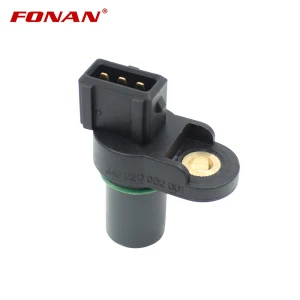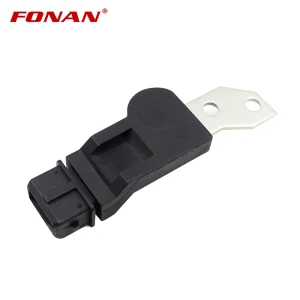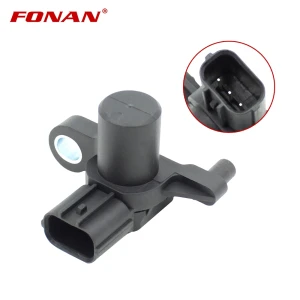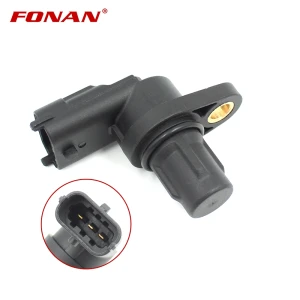Date: 2024.11.02 Click: 660
1. Definition and Function of Camshaft Position Sensor
The camshaft position sensor is a device used to detect the position and speed of the engine camshaft. It plays a key role in the engine management system of modern cars and can provide accurate position information to the electronic control unit (ECU). This information is essential for optimizing functions such as fuel injection, ignition timing and valve control. By monitoring the position of the camshaft in real time, the sensor helps improve engine performance, fuel economy and emission control.

2. Working Principle of Camshaft Position Sensor
The working principle of the camshaft position sensor mainly relies on magnetic field or photoelectric sensing. Its basic process is as follows:
Pressure sensing: The sensor senses the movement of the camshaft, and when the camshaft rotates, the sensor detects its position change.
Signal conversion: The signal is converted into an electrical signal through the Hall effect or photoelectric sensing principle. The frequency and amplitude of this signal are proportional to the speed and position of the camshaft.
Signal transmission: The converted signal is sent to the ECU to help optimize the working state of the engine.

3. Common types and their characteristics
Hall effect sensor: Using the Hall effect principle, when the sensor is close to the camshaft with a magnet, a voltage signal is generated. This sensor has a fast response speed and is suitable for dynamic detection.
Photoelectric sensor: By emitting and receiving a light beam, the sensor generates an electrical signal when the beam is blocked by a gear or mark on the camshaft. They are usually used in applications that require high precision.
Other types: Including magnetic induction sensors, etc., these sensors have specific application scenarios and advantages.
4. Application scenarios and importance
Engine management and optimization: The camshaft position sensor provides accurate position information in the engine management system, optimizes fuel injection and ignition timing, and improves engine efficiency.
Variable valve timing system (VVT): The sensor can adjust the timing of valve opening and closing according to the position of the camshaft, thereby improving the engine's power output and fuel economy.
Fault detection and troubleshooting: When a sensor fails, the ECU will receive inaccurate data, triggering the fault indicator light, prompting the driver to check the engine.

5. Common faults and maintenance suggestions
Common fault phenomena: unstable engine idle speed, poor acceleration, fault light on, etc., may all be related to the camshaft position sensor.
Maintenance and inspection: Regularly check the sensor and its connecting wires to ensure that there is no wear or looseness. During routine maintenance, check the status and operation of the sensor.

Conclusion
The camshaft position sensor is a key component in modern engine management systems. It optimizes engine performance and ensures safe operation by accurately monitoring the position and speed of the camshaft. Understanding its working principle and application scenarios is essential for maintaining and improving vehicle performance.
Content reference sources
Automotive engineering books and technical literature
Industry reports on sensor technology and engine management systems
Official technical information from automobile manufacturers
Please leave your requirements and contact information, and we will send you the quotation information as soon as possible.